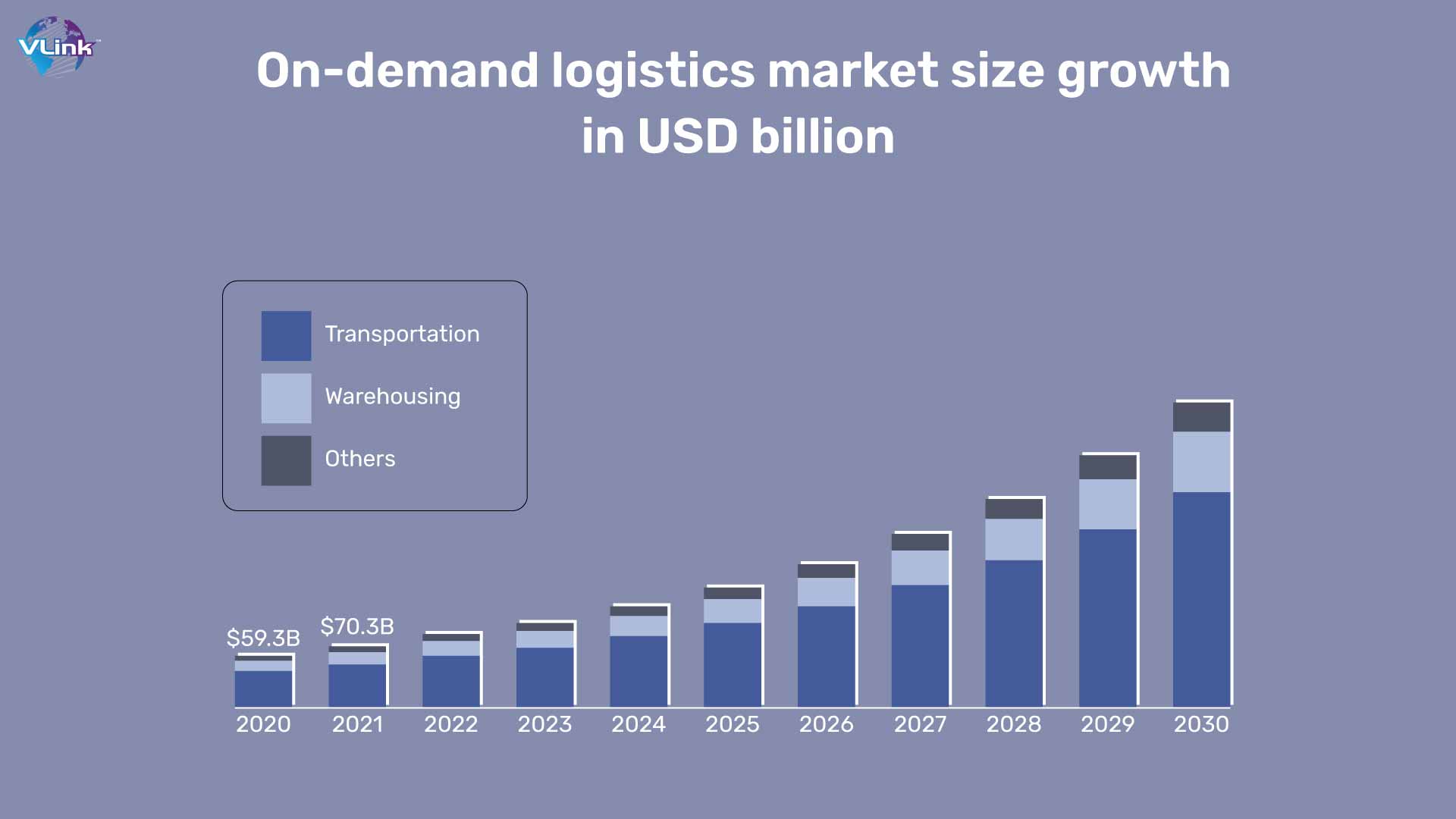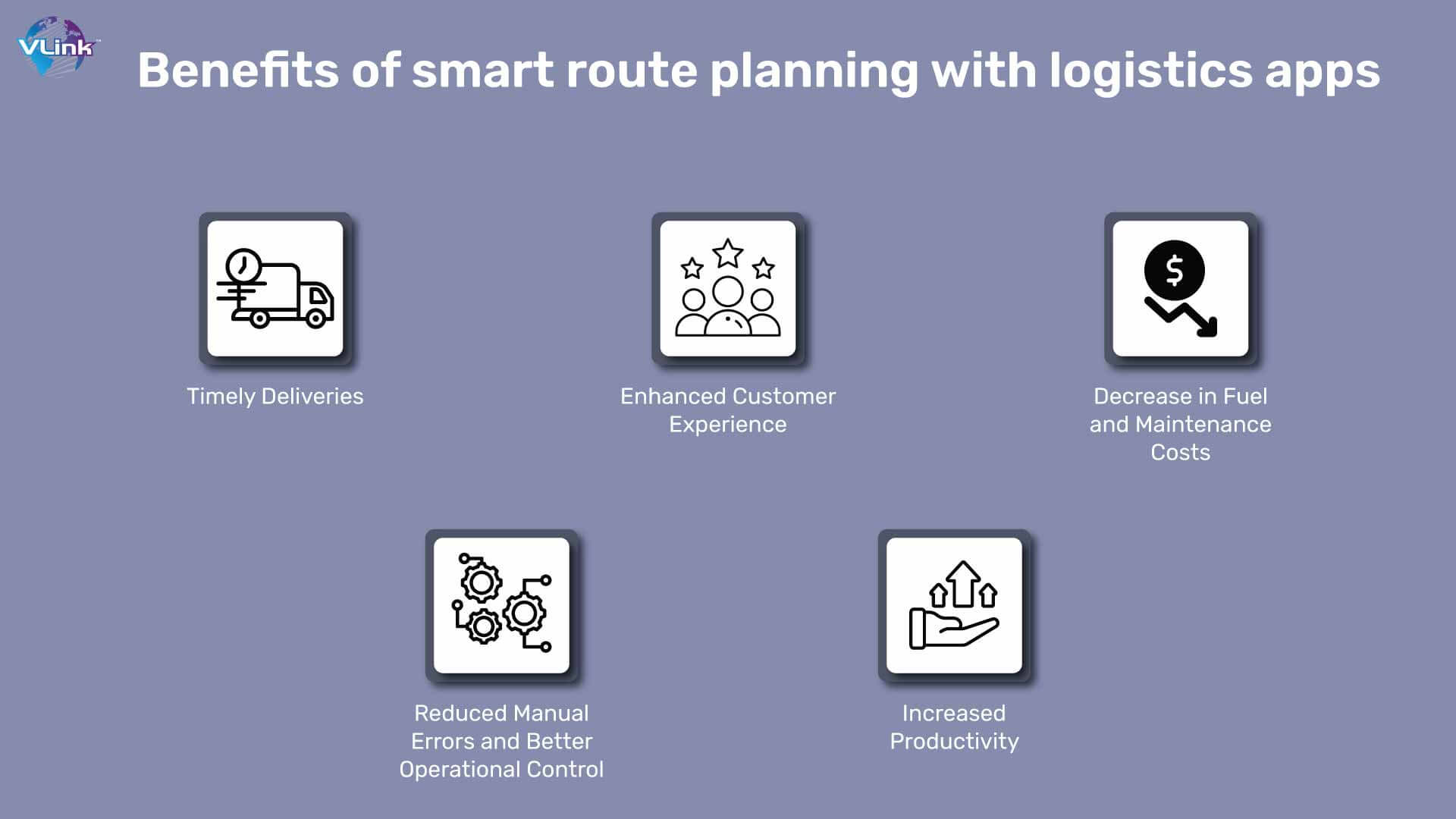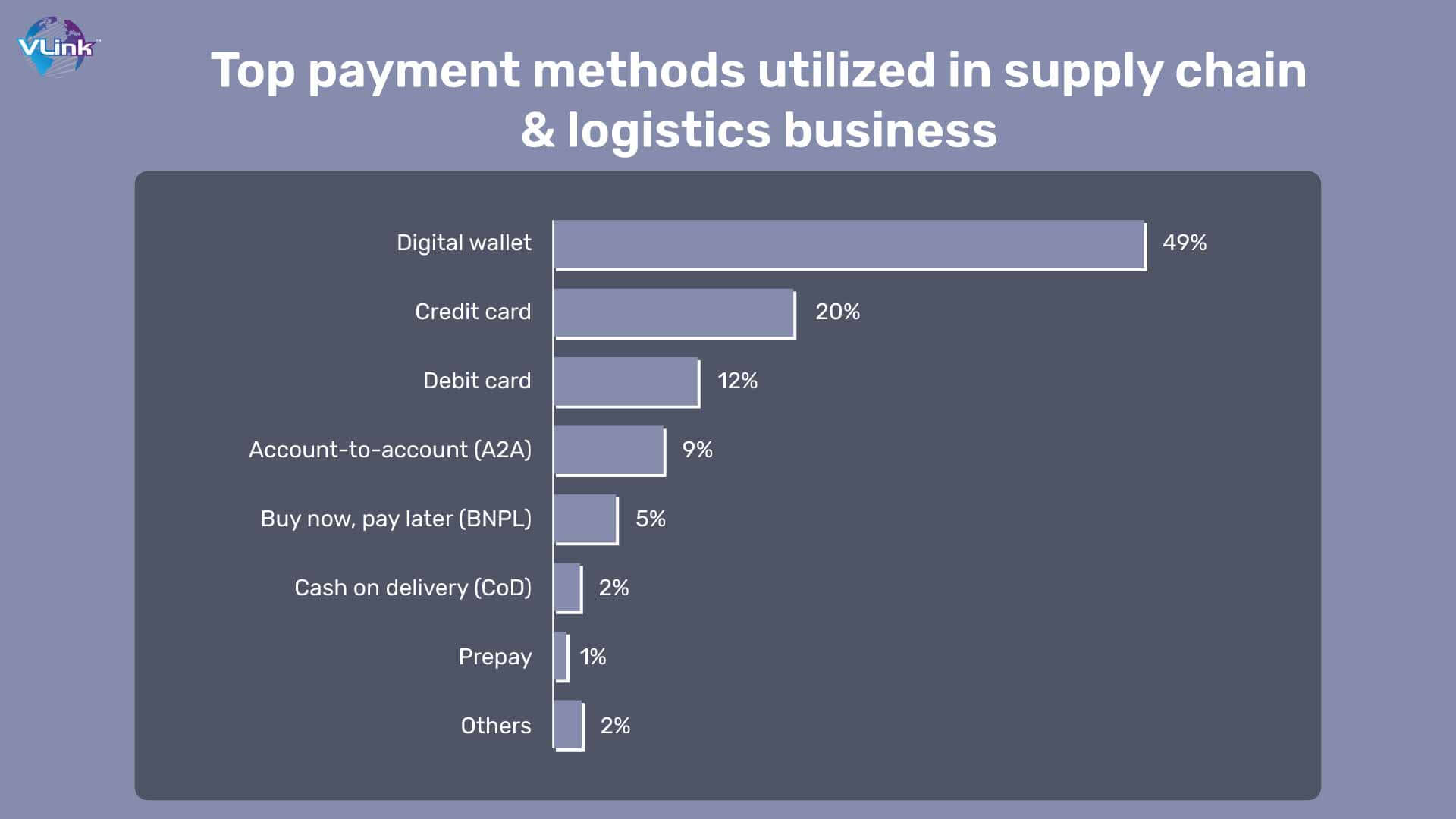In today's fast-paced industries, there is a consistent growth for on-demand logistics solutions that are not just fast but also highly efficient. This increasing need is largely due to the rise of e-commerce and the vital requirement for smooth supply chain management. These factors have given rise to a whole new world of on-demand logistics applications.
Before we dive deeper into knowing the complete process of creating such an app, it's important to know about some crucial concepts and factors included to have make your project successful.
In simple terms, it's a service that seamlessly connects businesses or individuals with logistics providers in real-time. Be it same-day deliveries, instant parcel tracking, or optimizing delivery routes, on-demand logistics apps offer a wide range of services aimed at making the supply chain more efficient.
 This all-encompassing guide is your ticket to understanding the key features, the app development process, and the financial aspects of crafting an on-demand logistics app that could truly transform your business and meet the ever-expanding expectations of your customers.
This all-encompassing guide is your ticket to understanding the key features, the app development process, and the financial aspects of crafting an on-demand logistics app that could truly transform your business and meet the ever-expanding expectations of your customers.
Why do logistics businesses need on-demand apps?
Logistics enterprises stand to gain immensely from the adoption of on-demand logistics applications, and here's why. These apps have ushered in a transformative era in the industry, offering a myriad of advantages that can substantially enhance the efficiency and profitability of logistics operations. Let's delve into the key reasons why logistics businesses need a mobile app to reach their goals:
- Streamlined Order Management: On-demand logistics applications revolutionize the way orders are received, managed, and fulfilled. They provide a centralized platform for real-time order tracking and management.
- Real-Time Shipment Tracking: These applications provide continuous, real-time tracking of shipments, empowering logistics companies to closely monitor the status and location of goods around the clock. This transparency not only builds trust but also elevates customer satisfaction.
- Smart Route Optimization: On-demand logistics apps leverage cutting-edge algorithms to craft the most efficient delivery routes. This not only reduces delivery times but also trims fuel costs, ultimately maximizing operational efficiency.

- Enhanced Customer Experience: Customers benefit from the convenience of placing orders and tracking deliveries through an app. They receive accurate ETAs, which can help manage expectations and improve overall satisfaction. Remember, customer experience is as important as user experience in the app.
- Reduced Operational Costs: Efficient route planning and real-time tracking help reduce operational costs. Savings in fuel, labor, and vehicle maintenance can significantly impact a logistics company's bottom line.
- Improved Inventory Management: The ability to track shipments in real time enables better inventory management. Companies can plan for restocking or warehousing more effectively.
- Competitive Advantage: Logistics businesses with a user-friendly on-demand app gain a competitive edge. It can attract more customers and retain existing ones, ultimately increasing market share.
- Data-Driven Decision-Making: On-demand logistics apps collect valuable data on user behavior and preferences. This data can be analyzed to make data-driven decisions and enhance operations.

- Scalability: As the logistics business grows, the app can scale to handle increased demand and serve a larger customer base. With on-demand mobile app development, you are accessible around the clock, providing customers and businesses with the flexibility to place orders and track deliveries at any time.
- Cost Savings and Efficiency: By reducing manual processes, paperwork, and the need for phone calls, logistics businesses can cut administrative costs and increase overall operational efficiency.
- Adaptation to Modern Expectations: In today's fast-paced world, customers and businesses expect convenience and real-time services. An on-demand app meets these modern expectations.
An on-demand logistics app is more than just a convenience; it's a necessity for logistics businesses looking to thrive in a competitive market. It enhances operational efficiency, improves customer satisfaction, and allows for data-driven decision-making, ultimately leading to cost savings and growth opportunities.
How does an on-demand logistics app work?
An on-demand logistics app is a digital platform that facilitates the efficient and real-time coordination of the movement of goods and services from one point to another. It simplifies the process of requesting, tracking, and delivering products or services, typically through a few key steps:
- User Registration and Profile Creation: The process starts with users, both customers and drivers, registering on the app. Users create profiles, providing essential information such as their name, contact details, and payment preferences.
- Placing a Request: Customers use the app to place a request for a specific logistics service. This could be anything from package delivery to ridesharing.
- Order Matching: The app's algorithms match the customer's request with an available driver or service provider who can fulfill the request. Factors like proximity, type of service needed, and availability are considered.
- Real-Time Tracking: Once a driver or service provider accepts the request, real-time tracking begins. Customers can monitor the driver's location, estimated time of arrival, and other relevant information through the app.
- Communication: Customers and drivers can communicate with each other through the app via messaging or call features. This ensures a seamless and transparent exchange of information.
- Payment Processing: The app handles payment processing, making it convenient for customers and drivers. Various payment options are usually available, such as credit cards, top digital wallets, or cash.

- Reviews and Ratings: After the service is completed, both the customer and driver can rate and review each other. Reviews and ratings help maintain the quality of service and build trust among users.
- Analytics and Insights: Data analytics tools collect information on user behavior and preferences. This data can be used to optimize operations and enhance the overall service quality.
- Customer Support: In case of issues, users can contact customer support directly through the app for assistance.
In essence, an on-demand logistics app acts as a bridge, connecting users who need a service with the appropriate service providers. It streamlines logistics operations, enhances transparency, and provides a convenient, real-time experience for both customers and drivers, making it an essential tool in the modern world of supply chain and transportation management.
Key Features of On-Demand Logistics Apps
Intuitively UI/UX design
An on-demand logistics app's triumphant journey begins with a UI/UX design that's both intuitive and user-friendly. This ensures that whether you're a valued customer or a dedicated driver, you can effortlessly navigate through the app's myriad features.
Real-Time Tracking
Real-time tracking is nothing short of a game-changer in the dynamic world of logistics. It's the compass that empowers customers and businesses to chart the real-time course of their deliveries, forging an unbreakable bond of transparency and reliability.
Streamlined Route Optimization
To carve a path of efficiency and cost-effectiveness, on-demand logistics apps deploy sophisticated algorithms to optimize routes. This innovative feature becomes the lighthouse guiding logistics providers and their customers to their mutual destination of satisfaction.
Secure Payment Gateways
A secure payment gateway is the bedrock of seamless transactions. Users can rest easy, knowing that they can make secure payments within the app, ensuring a world of convenience for both customers and logistics providers.
Reviews and Ratings
The implementation of a review and rating system provides users with the megaphone to share their experiences. This feature serves as the custodian of service quality, nurturing trust between all the participants.
Customer Support
Responsive customer support serves as the booster of a successful app. It provides users with a lifeline, a direct channel to seek assistance or report any concerns, thus assuring a positive and memorable experience.
Data Analytics and Insights
Data analytics tools emerge as the guiding stars for logistics providers, illuminating the path to optimization. By decoding user behavior and preferences, these tools drive improvements in service quality, setting the benchmark even higher.
Multi-Platform Compatibility
To cast a wider net, on-demand logistics apps must embrace multi-platform compatibility, seamlessly integrating with both Android and iOS devices. It's all about reaching every corner of the audience.
Real-Time Push Notifications
Real-time notifications serve as the rhythm that keeps users in tune with the status of their orders, the location of their drivers, and the expected delivery times. They're the heartbeat of this interconnected logistics ecosystem.

The On-Demand Logistics App Development Process
Now that we've covered the essential features, let's explore the development process.
Idea and Conceptualization: Identify the specific niche or market segment you want to target with your logistics app. You need to define the unique value proposition and features that will set your app apart from competitors.
Market Research: Conduct thorough market research to understand the demand, competition, and potential challenges in the logistics industry.
Choosing the Business Model: Choose a suitable business model, such as on-demand delivery, freight brokerage, or a combination of services. This will depend on how you are planning to monetize the app, whether through service fees, subscriptions, or advertising.
Legal and Regulatory Compliance: Familiarize yourself with local and international regulations related to logistics and transportation. Ensure compliance with legal requirements, including permits, licenses, and insurance.
Designing the App: Create an intuitive and user-friendly interface with a focus on ease of navigation. Design wireframes and prototypes to visualize the user experience.
Development: Build the app's front-end and back-end development components, including user registration, order management, payment processing, and real-time tracking features. Also, developers will implement robust security measures to protect user data and transactions.
Features & APIs Integration: At this stage, integration of secure payment gateways to facilitate transactions within the app. Also, there will be integration of all the necessary features that we’ve discussed previously in this blog.
Testing and Quality Assurance: Conduct rigorous testing and QA process to identify and fix bugs, errors, and usability issues. This will ensure the app runs smoothly on various devices and operating systems using testing as well as QA solutions.
Launch and Marketing: Plan a marketing strategy to promote the app's launch, including digital marketing, social media, and partnerships. Release the app on app stores (e.g., Apple App Store, Google Play).
Maintenance and Updates: You should also regularly update the app to fix bugs, enhance security, and add new features. This will keep you informed about industry trends and regulations for ongoing compliance.
Choosing the tech stack for on-demand logistics app development
Along with the process of developing an on-demand logistics app, there is another factor that is crucial – choosing the right technology stack. There are several technologies, frameworks, platforms, and approaches available to help you in the process.
Here is the list of must-chosen tools you will require to build a full-fledged on-demand logistics app:
- Frontend development: CSS, BootStrap, JAVA, Swift
- Backend development: Ruby, Python, Angular, Javascript
- Real time analytics: Apache, BigData, Spark, Cisco
- Payments: PayPal, Stripe, WePay, Amazon Pay
- Database management: MongoDB, MySQL
- Cloud computing: AWS, Microsoft Azure, Google Cloud
- Navigation: Google Maps API or other maps API
To understand this process further, consider the backend development of a mobile app. Here are the most recommended and utilized choices among contenders like Node JS, Python, or PHP assume paramount significance. It underscores a defining facet of your future product.
The best possible way to test your on-demand logistic app idea, you can go for MVP development. And once you get the desired results, make sure to enlarge the app with frontend and backend development solutions.
How much does it cost to build an on-demand logistics app?
The cost of developing an on-demand logistics app can vary significantly based on factors like the complexity of the app, features, and development team rates. However, a rough estimate can range from $50,000 to $150,000 or more.
It's important to note that while the initial development cost is significant, ongoing maintenance, updates, and marketing expenses should also be factored into your budget.
The on-demand logistics app industry is booming, and with the right features, development process, and investment, your app can be a game-changer in the logistics and supply chain sector. Remember, customer satisfaction is at the heart of this industry, so prioritize user-friendly features and excellent service to stand out in this competitive landscape.
VLink’s on-demand app development solutions to grow your logistics business
Building an on-demand logistics app is a journey, and when executed correctly, it can yield impressive results for your business. So, plan well, invest wisely, and watch your logistics app transform the way you do business in the modern world.
VLink is well-recognized for providing full-fledged mobile app development services, with a focus on impressing the potential audience and maximizing the engagement. With over 300 projects delivered, we have established our stable footprint in the industry.
Whether you’re starting from scratch or need our experts for your existing projects, don’t hesitate and share your requirements with us.
Frequently Asked Questions
Similar to the core of mobile applications, shipping and logistics firms are able to manage every task promptly. It will be the best resource for organizations to use to enhance their fleet management and transportation decision-making.
The logistics sector is undergoing a digital revolution through the integration of digital technology, processes, and strategies aimed at optimizing supply chain and logistics operations. Within the industry, these technologies improve transparency, security, efficiency, and customer experience.
Mobile apps can help in automating various operations such as order management, inventory management, fleet management, real-time order tracking, workforce management, and a lot more. These apps can also be integrated other technologies like AI, IoT, and big data to ease the operations quite flexibly.













